15 Items to Stock Up On For Winter
As the temperatures drop, it’s time to start thinking about these 15 items to stock up on for winter. From weather-proofing your home to stocking your pantry with comforting winter foods, a little planning can ensure you’re prepared for whatever Old Man Winter throws.
We’ve enjoyed this fall so far. The weather here in Utah has been sunny, warmer than usual, and with minimal wind. Mark tells me this is his favorite time of year. Besides the great weather for his golf outings, he says the crisp morning air, the college football on Saturdays, the NFL on Sunday evenings, and the MLB playoffs add to his fall-time pleasures.
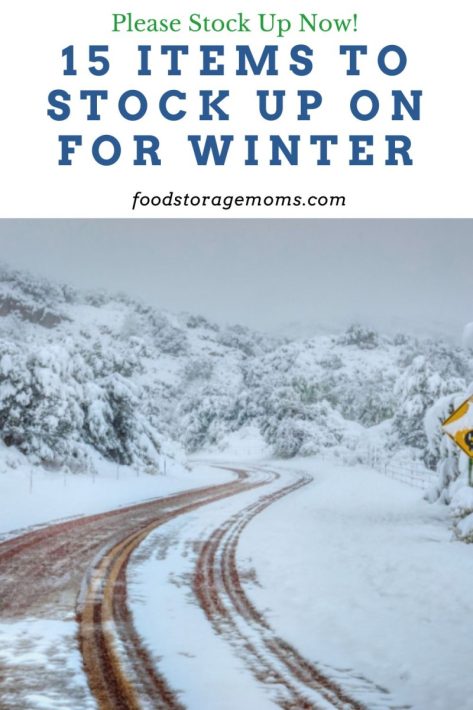
Based on some weather reports on the news today, I don’t think we’re too far away from our first winter storms to usher in winter weather conditions, and the local ski resorts are opening for business. It’s been interesting to see how the weather report anchors on TV announce some pending storms, with various names from winter weather advisories, winter weather warnings, winter storm warnings, and winter weather watches. I guess it reflects a matter of severity expected.
I expect nothing that may prove life-threatening with super heavy snow in the short term. Still, I plan to respond to these warnings by checking out my winter weather prepper gear inventory to ensure we’re as prepared as possible. I want to help my readers do the same.
Here are a few things you should have on hand as the temperature drops.
15 Items to Stock Up On For Winter
1. Weatherproofing Materials
One of the best ways to prepare for cold weather is to ensure your home is adequately insulated and weatherproofed. This means caulking any cracks or gaps in your exterior walls, windows, and weather-strip doors to keep the cold out. Other steps could include installing storm windows, ensuring that your attic has proper ventilation, and checking out and possibly replacing your installed alarms. Hence, your family isn’t subject to carbon monoxide poisoning.
We have had a few gas explosions in Utah in the last few years, and one was just two weeks ago. South Jordan, Utah Gas Explosion. It seems that the gas line underground leaked. By the time the chemical with rotten egg smell that was added for protection was close to this one home, the chemical had dissipated. The house was blown up, and a 15-year-old young man inside the home died. Please consider getting a Carbon Monoxide Detector and a Natural Gas Leak Detector. The leaders of South Jordan, Utah, where I live, suggest we all get one.
Doing this work now will help you keep your energy bills down when winter arrives in earnest and will also help prevent any damage caused by freezing temperatures or excessive moisture. Some people also cover their windows with materials like heavy blankets to provide an extra layer and add to the insulating value of their winterizing efforts.
2. Warm Clothing and Extra Bedding Covers
Another must-have for cold weather preparation is a supply of warm clothing and bedding. If you don’t already have a stash of winter clothes, now is the time to buy some new sweaters, hats, and coats. These outer garments can add to your efforts to prevent hypothermia. This lowering of body temperature can be an issue in cold weather and related excessive wind chill from those winter storms.
Investing in some heavy blankets and quilts for your bed is also a good idea so you can stay cozy, even on the coldest nights. We are often told that layers help to protect the skin, keep the body temperature at normal levels, and if outside, eliminate the fear of frostbite of hands and feet. If you experience a loss of feeling in your extremities, get proper coverings in the short term and visit a medical professional as soon as possible.
3. Comfort foods
Winter is the perfect time to cozy up with some comfort food. Whether you like to make soup, bake pies, or drink hot cocoa, ensure you have all the ingredients you need to enjoy your favorite comfort foods all season long. It’s a great idea to have some peanut butter so you can make some sandwiches with jam or jelly. It’s also wise to have some crackers, granola, cereal, and other quick-to-fix ingredients for meal prep in case the local grocery store is closed or difficult to get to.
Stocking up on non-perishable items like canned soups, chili, and pasta sauce will also give you some quick and easy meal options for those nights when you don’t feel like cooking. I would stock up on a few of these: 18 Meals In A Can I Recommend Your non-perishable inventory should include meats like tuna, chicken, pork, or beef so you get the high protein levels needed to stay healthy. Some don’t realize you can also get protein from beans, so get some of those in cans or sealed bags to carry you through the winter.
Ensure your food storage includes healthy, filling foods your family enjoys eating. Having them as shelf-stable foods readily available makes sense as you put your emergency plans and actions in place. A manual can opener is an essential piece of gear as you put your food inventory in place.
4. Weatherproof Backpack
A weatherproof backpack is essential if you live in an area with a lot of snow. No one wants to be caught in a blizzard without a way to carry their belongings. A weatherproof backpack will protect your things from the elements and keep them dry all winter.
Make sure that the backpack has some items that will add to your comfort and confidence as you experience things outside, like a flashlight, some extra batteries, mittens and gloves, a car windshield scraper, and sunglasses to improve visibility and protect your eyes at the same time. Also, don’t forget a winter hat and possibly some earmuffs.
5. Winter Tires
Winter tires are a must if you live in an area where it snows regularly. They provide better traction and handling in snowy and icy conditions, making you less likely to get into an accident (and less likely to spend money on repairs).
Some places in Northern Utah require snow tires and chains in areas like the canyons where people go skiing. My point is to check your tires before you take an extended drive somewhere or on a road trip.
Mark and I have always made it a point to have a mechanic check out our car before the winter weather. We want to ensure anything that needs attention is found before it becomes an issue. There is nothing worse than getting caught in a snowstorm or one of those ice storms and having the car break down somewhere.
Making sure your car’s heater and defroster systems are working is critical. If you become stranded somewhere, it could be a while before help arrives, and you want to be able to stay as warm as possible. If you are stranded in a snowstorm, drive with caution so you don’t slide into a snow drift, which could cause your exhaust pipe to get clogged and cause a dangerous situation inside the car. Having good quality windshield wipes is also a critical part of vehicle prep for winter weather.
6. Emergency Kit
It’s always a good idea to be prepared for the worst; an emergency kit can help you do that. Stock up on non-perishable food items, water, blankets, and a quality first aid kit with updated supplies to prepare for anything winter throws your way. In case you missed this post, 10 Things You Need In Your Disaster Emergency Kit.
I’ve always told my readers to carry a car emergency kit when traveling any significant distance. That is especially important during winter travel. That kit would include some jumper cables, kitty litter for tire traction, extra blankets, a window scraper, gloves, tire chains, and a small shovel to clear the snow around your car.
You should also consider having a bag of sand in the car. Kitty litter works great, but you may need more materials for traction on slippery roads. All these precautionary steps should be followed whenever you hear of winter storm watches on the TV or radio.
I’ve also always suggested my readers keep their car’s gas tank above half full at all times. Mixing drinking and driving is always high-risk behavior. The combination of alcohol and winter driving after that company party or family get-together is a trip down disaster lane.
7. Space Heater
Space heaters are great for taking the chill out of a room without cranking up the whole house heat source (and your energy bill). Just be sure to choose one that’s safe and Energy Star-certified, so you don’t have to worry about using too much electricity. Please review this post if you missed it: How To Heat Your Home In An Emergency.
Heaters and furnaces can take the chill from a room or office, but if you come in from the cold with wet clothing, they don’t do much good for a quick warm-up. Get those wet clothes off and either dress in dry clothing or wrap up in a blanket as soon as possible.
8. Hot Water Bottles/Hand Warmers
A hot water bottle is a great way to stay warm all winter (without spending much on electricity). Just fill it with hot water and place it under your covers before bed. You’ll stay cozy all night! Hot Water Bottles and Hand Warmers
I usually put mine near my feet, and it seems to do the best job for me. I have hand warmers next to my coat, hat, and gloves. You can put them inside the gloves in most cases. They sure help if you’re outside for an extended period, and they help stave off the chance of finger frostbite.
9. Snow Shovel
There aren’t too many things worse than being stuck in your home with no clear path to get out. A good snow shovel will help you clear your driveway, walkways, and any other areas around your property to safely get to where you need to go.
Be sure to take frequent breaks when shoveling snow. That white stuff can get pretty heavy, and we don’t want anyone to experience a heart attack while working on their own property or when helping a neighbor.
If you are past your prime, you may consider a good-quality snow blower. They are much cheaper than a trip to the hospital and last a long time if maintained properly.
10. Rock Salt/Or Other Safe Ice Melter
Rock salt is essential for melting ice and keeping sidewalks and driveways clear and free of dangerous slick spots. However, some winter warriors know that salt and commercial deicers can harm concrete over time. It’s tough to clean the concrete with your hose to protect it during cold winter days.
If you live in a very cold climate, you may want to consider having your concrete subject to snow and ice professionally sealed so the moisture and chemicals don’t get into the porous concrete surface. If an ice storm is part of your winter challenges, I’d for sure be getting that concrete sealed since it also acts as a water repellent in many cases.
11. Generators
Don’t let your family be cold and in the dark during a power outage in the dead of winter. A generator, if it has the right capacity, can help you heat your home, cook food, and continue living comfortably. But don’t forget to stock up on plenty of fuel as well. It’s hard to get a generator that runs all your home appliances. They may run the furnace, but having one to also keep your refrigerator and freeze operational is a challenge.
Keeping the fuel fresh can prove challenging. Talk with the generator manufacturer for guidance on maintaining it properly.
12. Firewood/Charcoal/Butane/Propane
For those of you who have a wood stove or fireplace and don’t plan on going the generator route, a stockpile of firewood would be an absolute must to help keep your family warm if the power were to go out. In case you missed this post, Emergency Fuel To Store For Survival
There are many ways to start a fire; one of the easiest is to have one of those small fire starters. You’ll want to practice using kindling and learn how to grow the fire using progressively more significant pieces of wood. This could be a fun family activity for all to learn together. 15 Different Ways to Make Fire Starters
13. How To Start A Fire
Fire is essential for warmth and light, as well as for cooking. Make sure you have matches or a lighter, as well as some kindling and fuel to get a fire going even during wet conditions. In case you missed this post, How To Start A Fire In A Fire Pit
14. Tent For Shelter
Shelter is crucial in any survival situation, but it’s essential in the winter. If you have to be outside during stormy conditions, a good tent can help protect you from the elements and help you conserve body heat. Tarps and blankets can also create a makeshift shelter if you don’t own a tent. Don’t be tempted to use a propane or kerosene heater in the tent since you can suffer from carbon monoxide poisoning.
15. Water Filters
Clean water is vital for survival, no matter the time of year. But in winter, rivers and lakes may be frozen, making it difficult to find clean water sources if the local water utility becomes inoperable. That’s why having a water filter with you is important to purify any water you find. These are my favorite LifeStraw Go Water Filter 22 oz Bottle
I also recently posted about Portawell, a great portable water filtering system. The Best Portable Water Filtration UnitThe Best Portable Water Filtration Unit
Other Items to Consider
There are other items that you should consider, depending on your family makeup:
- Baby formula or regular baby food for the little ones.
- Diapers and baby wipes.
- Medications for family members with unique medical needs.
- Paper goods like toilet paper, paper towels, plates, cups, and plastic utensils.
- Prepper foods like grains, pasta, juices, flour, and rice.
- Food and other pet essentials if you have pets of any kind.
Final Word
As the temperature drops, you must ensure you’re prepared for whatever winter weather throws your way. Weatherproofing your home and stocking up on warm clothing and bedding are essential first steps, but don’t forget about stocking your pantry with comforting winter foods. By taking a little time now to prepare for colder weather, you can ensure you’re ready for anything once winter finally arrives. May God Bless this world, Linda
Copyright Images: Snow with Umbrella Woman AdobeStock_320874793 by Milan, Icy Snowy Roads With Car AdobeStock_478501089 by By Максим, Snowy Phantom Canyon AdobeStock_508821179 By Dana

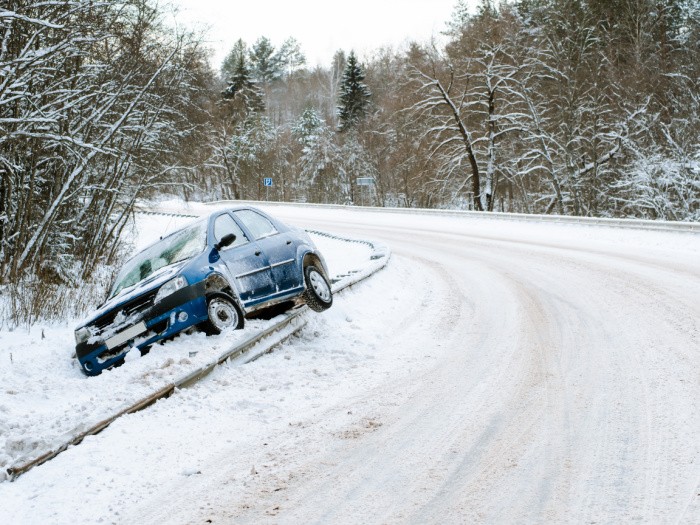

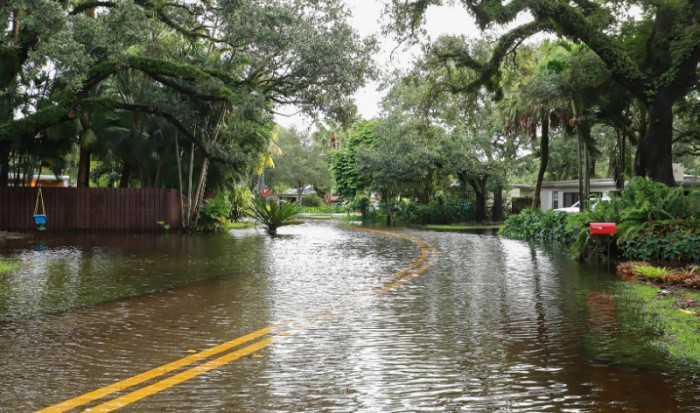
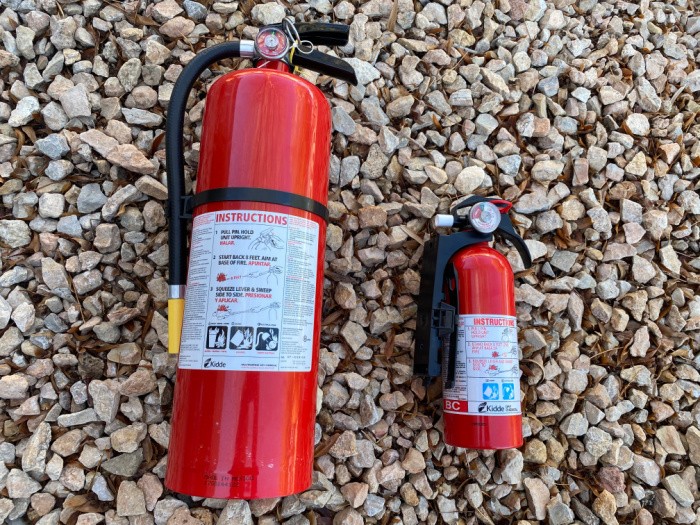
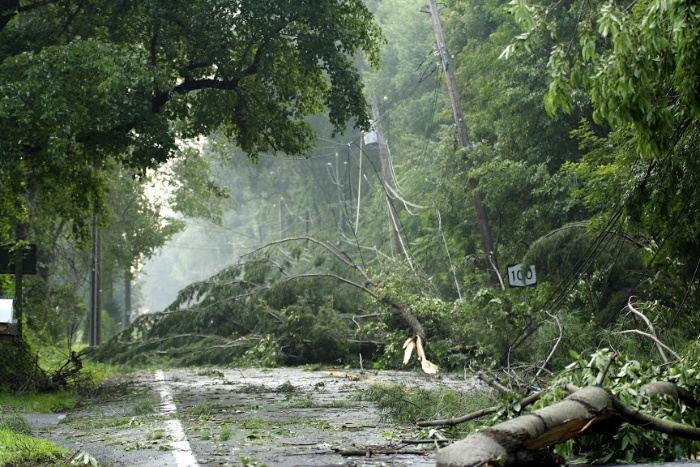
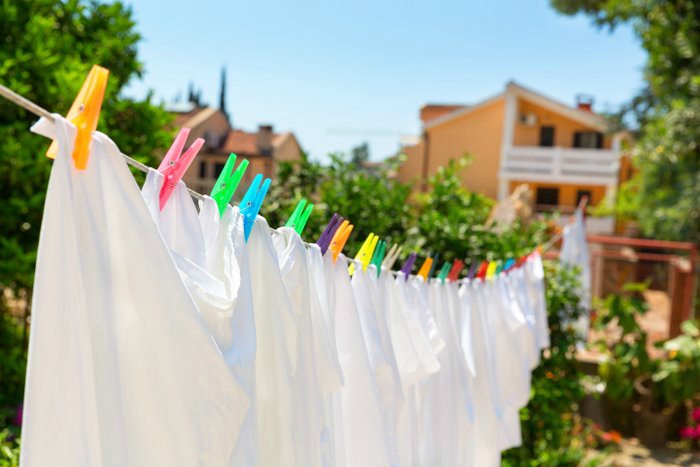
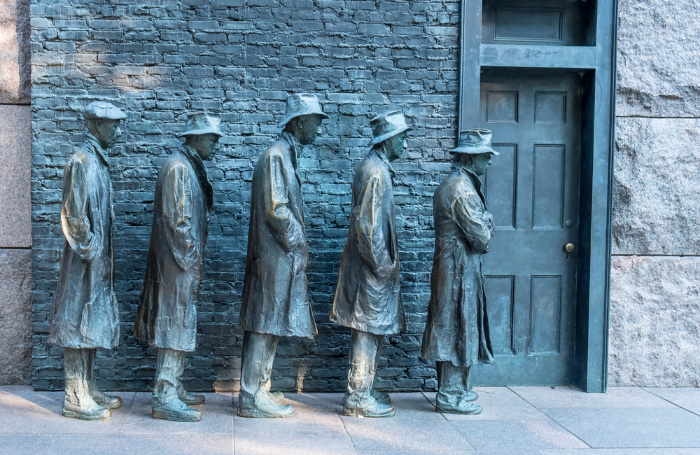
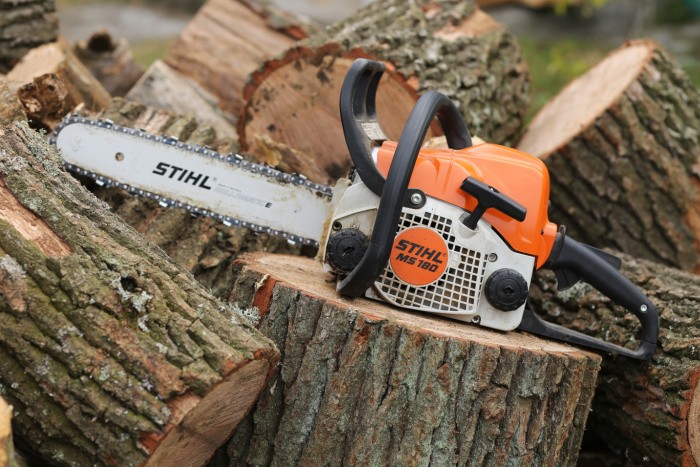
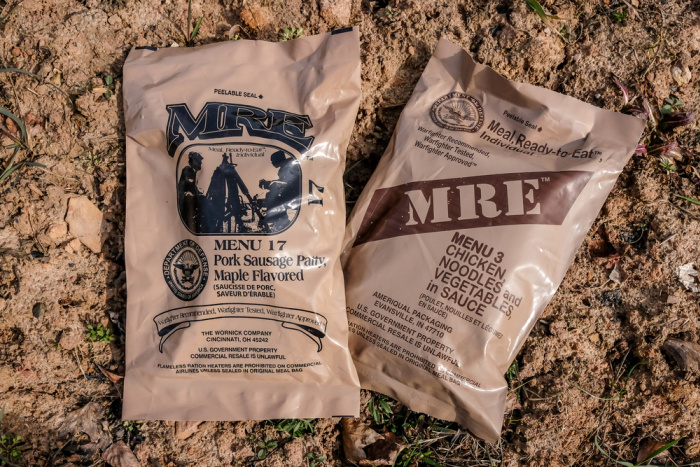

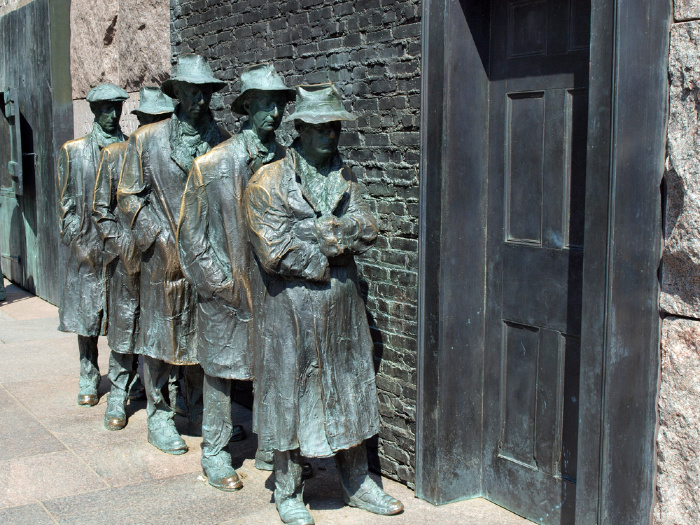

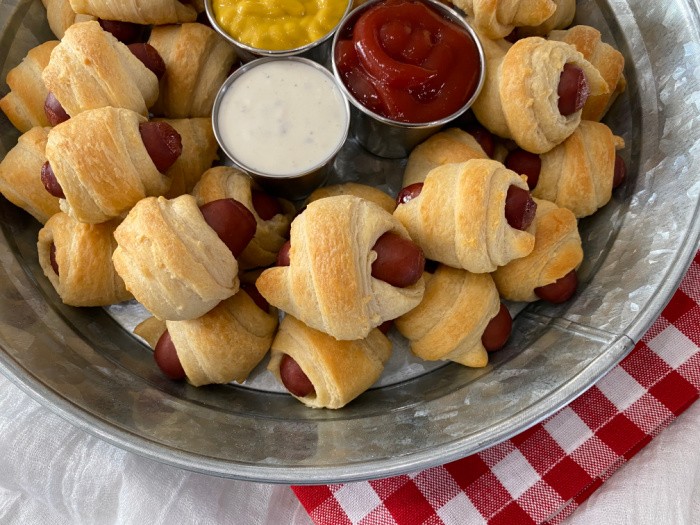
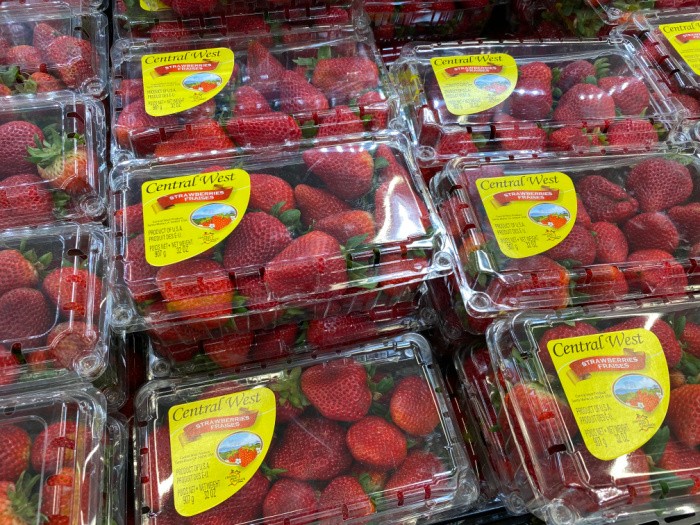

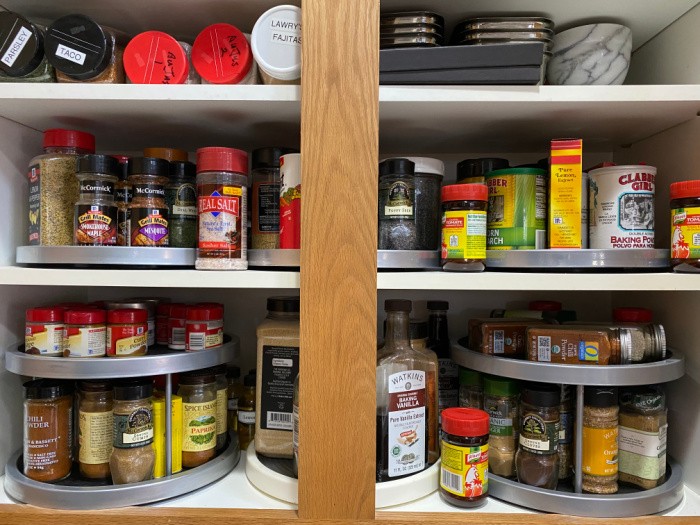
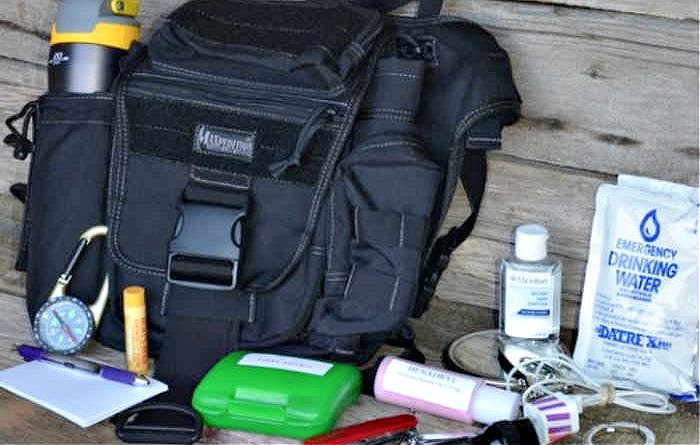

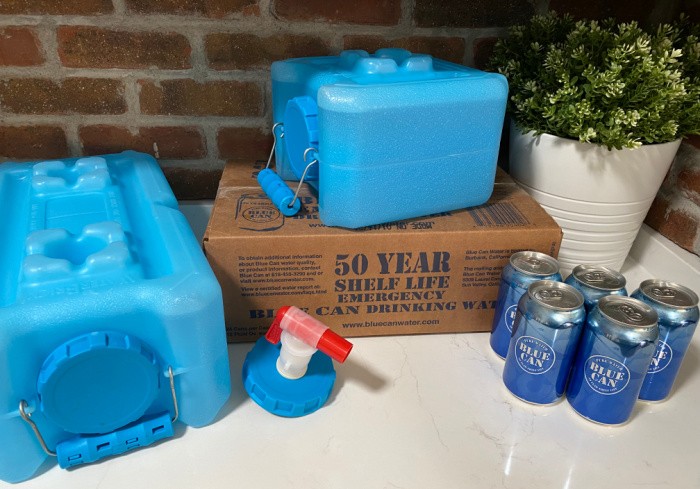
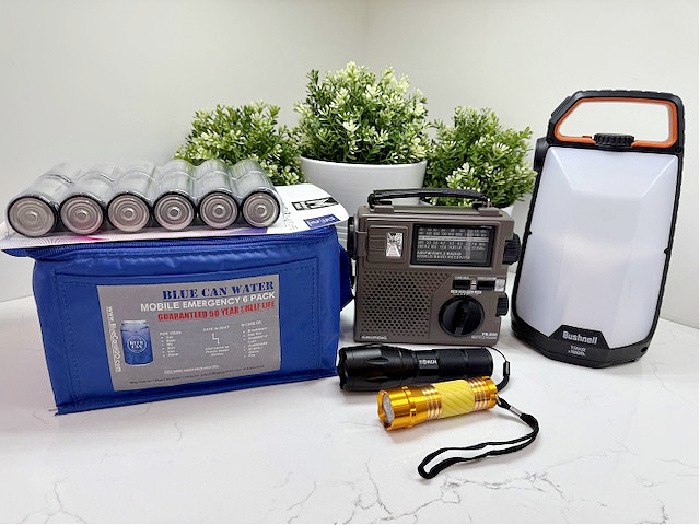

Concrete and bricks get damaged by the thaw-freeze cycle. When your ice melt works, the liquid will seep into the concrete or bricks which isn’t terrible by itself, but at night when the temperatures drop it might get cold enough for that liquid to refreeze. And since ice expands when it freezes, it cracks the concrete or bricks. I use calcium chloride pellets since they work down to -25F which minimizes any refreezing.
A bit pricey, but after 12+ years of constant use, my concrete walkways are still intact despite liberal use of these pellets….. To save money I use rock salt on my asphalt driveway, at least until temps dip too low, then I use the pellets.
Freezing is also something to watch out for with water filters….if your filters aren’t completely dry and they freeze, they will crack internally which renders them pretty much useless for protecting you from bacteria and/or viruses. If I have to bug out in cold weather, I plan on keeping my Berkey Sport bottle inside my jacket to keep it from damage….
Hi DMWalsh, I am now back in snow country so I have to reeducate myself on ice melters!! I will shop for those calcium chloride pellets! Thank you!!! Linda
Check out the wholesale clubs. As we approach winter they tend to get pallets with either bags, or even better, buckets of calcium chloride pellets. I love the buckets since I can slap a gamma lid on top and leave it by the doors of the house or garage for easy access while still keeping it from turning into a brick after absorbing too much moisture from the air.
Last time I stocked up it was $20 for a 5 gallon bucket of pellets, but that was a few years ago since I overbought…no idea what this year’s price might be. Sigh.
Be safe out there, things are getting crazy!
Hi DMWalsh, great reminder about the wholesale clubs. I will check out the prices the next time I go. I love Gamma Lids! Linda
Another thing to consider with ice melters is if they are safe for pets. Alot of them aren’t but they do sell pet safe melters-for more money, naturally.
Hi Robbie, a great reminder for ice melters if they are safe for pets. Of course, they have to be more money!! LOL! I was shocked at the butter prices today at Costco. Everything is so much higher. Linda
I have to make a supply run to Costco soon and I’m dreading it. Since our 13 yr old grandson lives with us, my grocery bill has gone sky high. I have to have a talk with him about all the snacks he eats, etc. Ouch, but that stuff adds up quickly. That’s a shame about the butter because that’s definitely on the list!
Hi Robbie, the butter today was the 4 packages for $14.29. In other words $3.57 a pound. I hear you on the snacks and growing boys! I have to cut back on so many things thankfully I have a good supply. I picked up 6 packages of butter (24 pounds) we spent $200.00 and I can’t say there was much to eat except for butter! LOL! I did buy canned chicken, no limit on them today. Six cans for $15.99. Unbelievable. Pretty soon we will be vegetarians. Linda
Hi Linda! Another great post. We rarely have freezing temperatures. That being said, I think this year, it will be colder than usural.
Hi Deborah, yay for not having freezing temps!! Linda
I love all of your preparedness post .We can never be over prepared .Just curious since you live in Utah are you LDS ?
Hi Nicole, we definitely need to be prepared. I don’t normally share my religious views. Thank you for your sweet comment. Linda
Thanks Linda for another great reminder. I just got out our space heater yesterday to check it, and my husband said it needed replace. We went out and got one first thing this morning.
Another thing that I think is vital for winter, is getting together with friends and family. Most people are good until the holidays are over but January and February need more socialization, especially for us retired folks. The gym will kill two birds with one stone. We see people and get in shape. Win/win.
Hi Janet, thanks for the reminder about the gym. We have the Silver Sneakers, Mark goes, I need to get my act together! LOL! People need people for conversation, that’s for sure. Linda
Our house isn’t that old and well insulated. I have the clothing and bedding down good….. 9 furry, fluffy queen size blankets, 5….yes 5 LLBean long winter robes, 4 cuddle duds leggings, and 9 new heavy weight sweaters…..ditto for my husband….and we don’t leave the house more than once a week…..IF the weather is safe. Comfort food….. hot chocolate, dark chocolate, milk chocolate…. ok…..soups, plenty of chicken and turkey, pot roast meals. Emergency kit…check, space heater, gas fireplace, generator…check…. next week is supposed to be in the 60s so I can double check and add to our supplies. We are also planning for a soup/chili cook-off in January….weather permitting.
Hi Chris, I love the people knowing I have chocolate stored!! LOL! But in all honesty, just knowing we have supplies in our house is the best feeling ever. Bring on the soup, we’re all ready. Linda
Hi Linda! If anyone does noot have a weatherproof backpack, if you put your items inside plastic bags and/or put a garbage bag as a liner, your pack may get wet, but all your items will be dry. Stay warm and safe! God bless!
Hi Jan, great comment and reminder about one more way to stay dry! Linda
My husband starts on winter preps in August when it’s still close to 100 degrees here. LOL. He’s done with projects on the house and has switched to getting the garden put to bed for the winter. We picked several buckets of green tomatoes a couple of days ago and they will ripen in the basement cold room. I think we will have enough so I can put up more spaghetti sauce and salsa. Tomatoes didn’t do well this year until it cooled some and they took off. I’m okay with that!
Hi Paula, oh, your husband is ahead of the game! Yay! This year some people didn’t get any green beans or tomatoes. Crazy weather! Linda
My husband does that too. We always get the chimney cleaned and inspected fill our propane, and cut wood. In the fall I am too busy canning to help, so earlier is better.
Hi Janet, great comment!!! Linda
You could try making Pickled Green Tomatoes. They can be fridge pickles or you can pressure can them to have pickles all year. It’s particularly good if you have a slew of dark green cherry tomatoes. My experience with the dark green cherry tomatoes i they often rot before they ripen, or they shrivel up. My recipe was for fridge pickles, just basic vinegar brine and spices. They kept in our extra fridge perfectly all Winter long. ( I made 2 gallon jars of fridge cherry tomatoes. You wouldn’t need to refrigerate them if you have a space that remains between 38 and 43°. I did sterilize the bottles to be safe but had no trouble. From time to time I would sterilize a quart Ball jar and filled it using a sterilized utensil, for safety, it was just enough to last a couple weeks, then brought them up stairs to our primary fridge. There are recipes for sweet and sour tomatoes, half sours, dill pickles, and others. I got my recipes from my canning books, and the Ball Canning recipe book. I made sure to update my methods every year. I used a pressure canner since tomatoes are now classified as a low acid fruit. I just thought a little different use might interest you. Don’t forget green tomato pies! There are canning recipes all over Pinterest and the web.
HI MaryAnn, what, there is a green tomato pie?? I need to Google that one, sounds interesting!! Linda
Absolutely! I just did a quick perusal of Pinterest and found 30+ recipes for Green Tomato/Mock Apple Pie. It seems to be a dish that has Southern roots ( shades of fried green tomatoes, anyone?) Plus my Mother used to make and can a very tasty Meatless Green Tomato Mincemeat for pies. I saw 1 recipe for that too. You might find it in some canning cookbook, especially an older one with roots in Dixie. I’ve always found if you keep your canning knowledge up to date, most older recipes can still be used. They may now need pressure canning, rather than water bath processing, or heaven forbid, oven canning. Green Tomato Pie can be made from fresh green tomatoes as well. With the correct seasonings you could barely tell it isn’t a Granny Smith Apple Pie.
Hi MaryAnn, I need to check those recipes out, thank you! Linda
I thought after dealing with snow storms and blizzards for the last 60+ years, I had it down pat. I gave my husband your list, and he pointed out the your list is practical, while I tend more towards the creature comforts. I left our safety to him, while I was about food and drink of course, but also the fluffy pillows, furry blankets, soft robes and socks, scented candles, good books and chocolate (naturally). We each had our responsibility.
Hi Chris, soft robes and socks oh yeah baby! And the scented candles, we need all those as well! Life is good! Linda
Hi Linda, part of my Winter SUV kit, I always carried a short handled broad blade snow shovel. I also to 2 Hefty Trash bags some heavy duty magnet attached with duct tape on the long sides they were long enough to span both, front windshield secured with the magnets to the roof and hood. The short sides were long enough over wrap my two mirrors and secure inside both doors. The one for the lift gate the magnets secured it to the roof and drop down, then the ends were tucked under the lift gate. I also carried an adjustable handle snow broom. That I used to clear the roof of snow before I get on the road. Massachusetts law requires all driver to clear all snow and ice from the roof before driving. I always had a 60 lb bag of sand on the rear deck over the rear axle. There to provide traction, I had rear wheel drive and we often have freezing rain, or temperature drops that freeze over bridges. Plus New England is the home of Nor’easters, that could mixed freezing rain, sleet, and snow as well as 60+ mph winds that can push you around on the roads. I was in Nursing, so we always had to get to work. Plus, I worked the night shift for over 30 years. So I would always get out and have 2-3 ft plowed snow banks, drifts, to shovel away, then shovel out the truck, before I could leave for home. When I got home, I had to park on the street while I shoveled the plowed snow bank across the parking lot entrance, shoveled a path to my space, then shovel my space out. Occasionally a neighbor would come out to help, once a neighbor down the street brought his snowblower to help( there was nearly 3 feet of snow in the parking lot that time, but I had to shovel out to get in before I was done. (snow emergency, no on street parking allowed). If I did the shoveling , the plow driver wouldn’t knock on my door in the late morning, to move my truck out of the way. Plus he wouldn’t plow me back in.. One other bit in my emergency kit were 2 small cans of lock de-icer. One in my pocket of my jacket, plus a small rag and a spare one in the glove compartment. I didn’t see that listed here. If I did have to use it my mountain bike commuter husband would ride in before I was finished, so I could bum his Teflon bike lube to re lube the locks. A tip I got from my day. BTW, the shovel and sand were also used if I hit a sheer ice stretch and despite being in low gear, slither into a snow bank. They were my most valued part of my Winter kit. Also, after the Blizzard of ‘78, everyone here learned the value of carrying a spare set of clothes, jacket, and gloves or mittens. If you got sweaty and soaked, it was a set of dry clothes to change into. I carried a warm pair wool pants, a heavy sweatshirt, and another jacket with a heavy set of ski gloves. All over sized so I could don them over my clothing I was wearing for warmth. My Father gave me the first piece of my car kit. When I drove up to NH after I got my license and an old clunker to drive, he went up in the attic and brought me a heavy wool army surplus blanket brand new, encased in heavy plastic. He told me to always have it in the car in case of an emergency. I always kept a big, commercial grade, first aid kit under the car/truck seat. You never know! It came in handy one day at the Community Garden, when one of the other gardener, slashed him self badly. I was able to control the heavy bleeding, and bandage him up. I told him he needed to go to the ER , I knew he needed stitches. And a tetanus shot. He grumbled but his wife prevailed and drove him to the ER. Another time I stopped at an accident to see what I could do to help. I can’t recommend having a First Aid kit on board, high enough. You never know when you’ll need until. you don’t have one and need one. Finally I always carried a 2 liter bottle of water with me, and some sealed hearty snack foods in double bags. Just in case I got stuck, so I couldn’t get myself out of the pickle, and had to wait for help. I’ve always been in the heavy precipitation belt in MetroWest Boston. Since I left NH. Hope this information helps somebody, kids with their license and a first car, young adults just starting college or their first big job. Those who have never had to worry before because someone else took care of them. Or people who have moved into a new, unfamiliar climate. Another thing. Maps, you can punch your destination into your phone or car, but what if the battery goes dead, or the device is wildly inaccurate for some crazy feeling. Don’t count on the bells and whistles. You are the driver, you are responsible.for yourself and your car, while someone may be out there worried about you. A can of WD 40 is very useful, too. A basic tool kit is necessary, learn how to change a tire, have a sturdy Jack, know where your spare tire is, check it 4 times yearly to be certain it’s in good working order, and actually in it’s compartment. Carry jumper cables, and know how to use them. Finally, a gallon of washer fluid, with anti freeze in it. Winterize your vehicle every Fall. That’s it for now. Good post.
Hi MaryAnn, wow, thank you for all these wonderful tips! I wish Utah made a law to scrape the rook of your car. I love your great ideas!! Linda
What led to that law here, were several fatal accidents when icy crusted snow flew off their roofs and shattered windshields behind them. Resulting in instant death by impalement of glass shards, or large chunks causing fractured skulls and other heat trauma, the resulting loss of control resulting is chain reaction crashes, deadly to many more. If not that, stacks of powdery snow, blow off and landing on windshields, blinding drivers who also lose control and again cause those dreaded chain reaction crashes, that can also cause major injuries and fatalities. Meanwhile the careless driver responsible for these crashes and all the the destruction of property, loss of employment, and grieving family members. Never stop and take responsibility for their actions. They just zoom away down the road. Also the reason more and more traffic cameras are being placed in every possible spot along highways and roads here. There is still a major problem with 18 wheeler box trucks. They still have not found an effective, practical way to de ice the boxes. When ice detaches from the box tops, it comes down in larger amounts with much more force than from a car. They steadily de ice plane after plane for long hours at Logan Airport. But they can’t come up with a practical way to de ice these trucks before they hit the road. So it’s still a work in progress. The point I was trying to make is the importance of having a complete on board emergency kit tailored to your regional needs to be prepared for every problem you may encounter and somethings you don’t expect.
HI MaryAnn, wow, I have personally been “blinded” by powder snow by cars ahead who did not scrape or sweep it off. I was not aware of the more dangerous shards of ice flying off. That is terrible, people need to read this, thank you, Linda
High trucks present even more danger since hardened snow and ice chunks flung off them, drop further, faster, and with more force, than from, SUV’s. They can shatter windshields, and even instantly kill or severely injure the driver and passengers, resulting in severe multi car crashes with more serious injuries and fatalities. Or the stuff crashes to the road directly in front of drivers with no time or room for evasive measures. The same results apply.
The East Coast Nor’easter is a different animal than storms that approach from the Upper MidWest or dive down out of Canada. They are usually all snow, and usually powder snow. The winds are hard and gusty, but we can handle those.. The storms that drop down to the Mason Dixon line roughly, lose their energy, which translates to storms regenerating off the Carolina coasts. These become the beasts we call Nor’easters! they become stronger and colder as they come North and manage to drag a long swathe of tropical moisture, that wraps into the storms. The worst are those whose center tracks directly up the coast.. Becoming more and more powerful as they come.. with the mix of cold and tropical air they consist of rain, freezing rain, sleet, snow pellets heavy wet snow (AKA Heart Attack Snow) and powder snow. The winds can be nearly hurricane strength and blizzard conditions can happen. But the worst part is the waves of varying precipitation. You have rain, sleet, freezing rain sleet, snow pellets wet snow and powder go back and forth over head as the storm cycles and recycles overhead.. if you have to go out and shovel during or after, you can actually see the layer cake effect in the accumulated snow.. All the moisture drops to the bottom and freezes into a thick layer of rough ice. Clearing the rest may be heavy, and hard work but is moveable if shoveled immediately< before it has a chance to set up and freeze into immovable rock. But that bottom layer stays the entire Winter, getting thicker with every fall of wet snow.
It’s Nor’easters that cause the buildup on the trucks, that becomes so dangerous..the cars and SUV’’s are caused by lazy, irresponsible drivers. All you can do is hope someone else’s roof dumps on their windshield, blinding them. Unkind, true. But Oh so poetic justice, well deserved. Until next time.
Hi MaryAnn, great comment, my friend. I really do not like driving in the rain which turns to sleet and then snow. Then the temperatures drop and the roads become ice skating rinks so to speak. I have always had 4WD on every car we have ever purchased. Well, as you know 4WD is helpful going uphill (not on ice) but in the snow. Coming down it does not work. Most people do not understand that. The shoveling is bad some years. You have to keep up with it or you may not see your driveway until Spring. As I’m writing this I’m starting to remember why WWE moved to Southern Utah in the desert. We still do not have a building permit, it is now one year. I wish we had not sold our home in Southern Utah. I never would have guessed this would be such a nightmare to get a building permit. Oh well, we may have to some up with a PLan B and it won’t be here. LOL! Linda
Your winter list came in handy, more for our friends than us. While we are north of Buffalo and only saw about a foot, 30 minutes south of us they saw 70 inches. Our friends couldn’t even open their door.
Even with the Thruway closed, one hundred or more people were stranded, and needed to be rescued. It’s too bad common sense can’t be added to your list. The media talked about the upcoming storm at least 5 days in advance. Sometimes you just can’t save people from themselves.
Hi Chris, I saw that on the news! I can’t imagine going out in that weather! Sometimes people think if they have 4WD their car or truck can do anything in the snow. I just shake my head when I see people driving faster than they should on a snowy day. And I have always had cars with 4WD because of where we have lived. There is no way I would have ventured out in that storm. Crazy! Linda
Linda and others, i live in an area where 6 inches of snow has been the max for us for a while…. often we get more ice than snow… I have a sloped asphalt/concrete pad/area.
I must go out to do some chores whether it is cold or not…My answer has been to use a corn scoop to clear the snow as far down as possible and put dry kitty litter on it… at least a couple of times while is falling… as we get older our bounce gets weaker…. and i do not want to test my bounce.I also keep a bucket full of dry sand on the porch i can use too!
Hi Denise, I totally agree with you on the snow and icy slopes, they scare me too! I use melt snow but it’s hard to keep up on it. Thankfully our SIL shovels, my husband 78 years old thinks he can shovel, he shouldn’t be doing it. I like the dry sand idea and the corn scoop. Love it, Linda